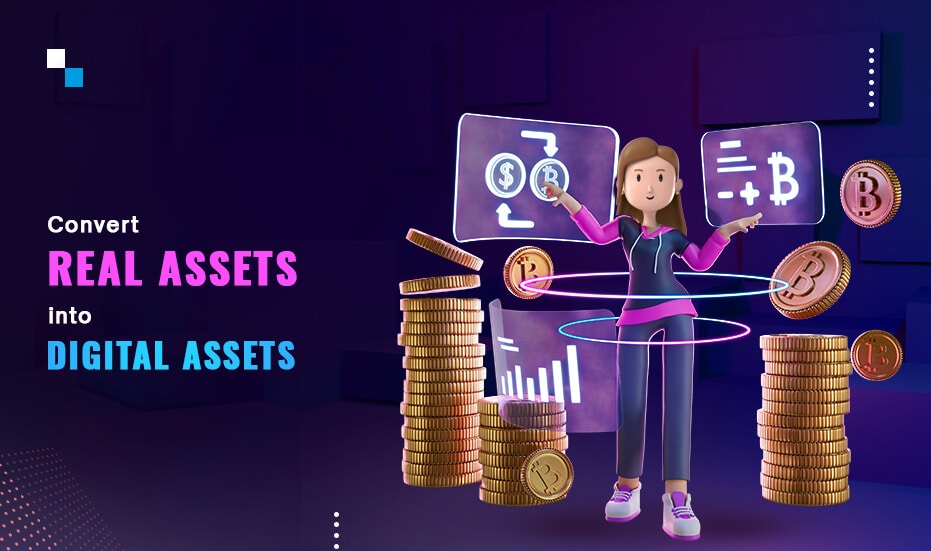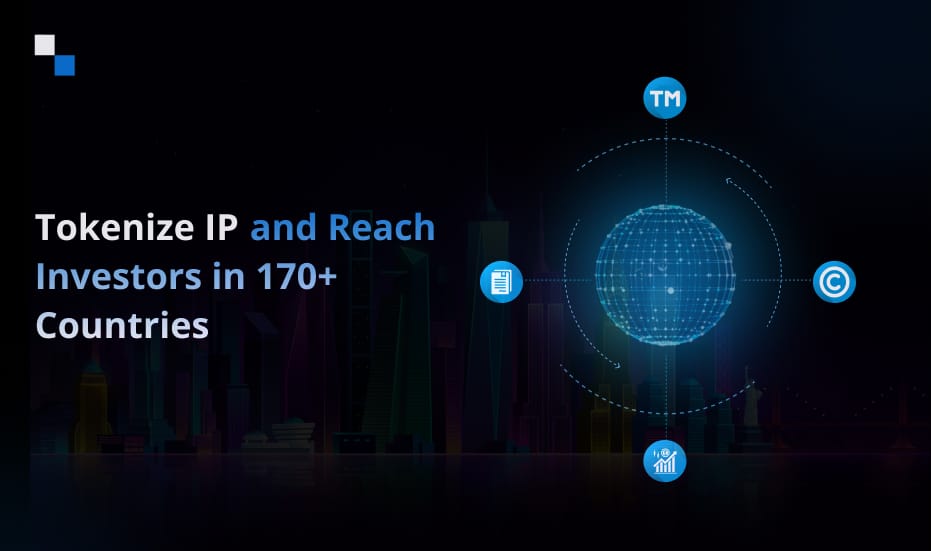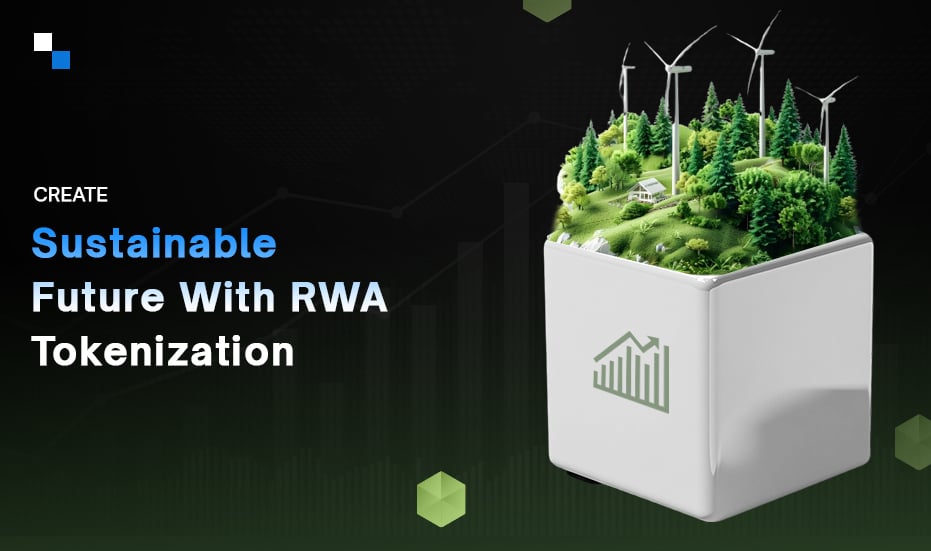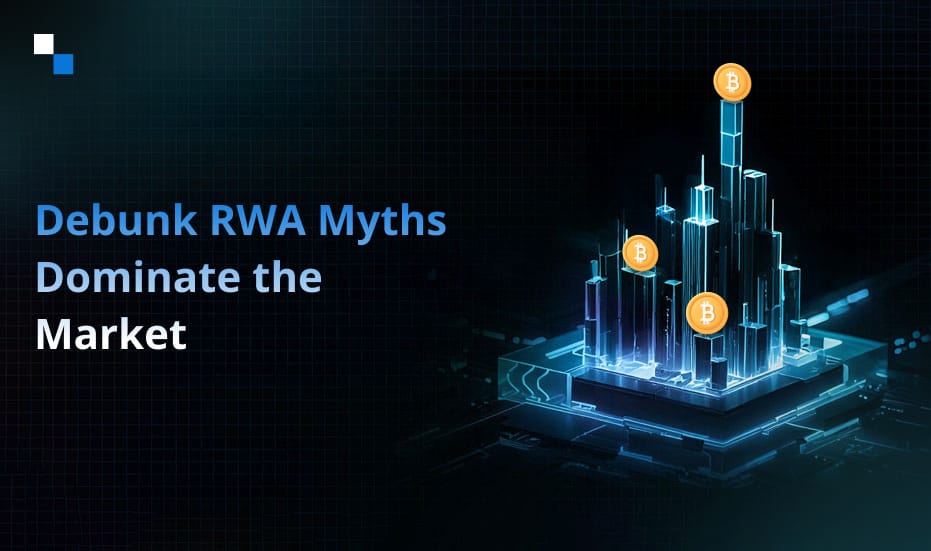
Here’s How & Why Set Up Your Fashion Store In Metaverse
April 24, 2023
Top 10 Cryptocurrency Exchange Scripts in 2024
April 25, 2023Investments have come a long way from traditional forms of ownership and transactional methods. The advancement of technology and the increasing adoption of blockchain has helped asset tokenization to emerge as a groundbreaking innovation in the investment landscape. Asset tokenization services have the potential to disrupt traditional financial systems and are democratizing investment opportunities. It has helped unlock new avenues for investors and asset owners alike. A latest study on “Industrial Growth of Global Blockchain-Based Asset Tokenization Market 2022-2028” revealed that the asset tokenization market is going to boom.
In this blog, we will delve into the concept of asset tokenization and shed light on the future of this innovative investment tool.
Understanding Asset Tokenization
Asset tokenization refers to the process of converting tangible or intangible assets into digital tokens on a blockchain. Tokens represent ownership or shares in the underlying asset and can be bought, sold, and traded like traditional securities. What can be the asset? The asset can be anything of value, such as real estate, art, commodities, stocks, or intellectual property. In March 2023, the tokenized gold market reached over $1 billion in value.

How to Convert Real Assets into Digital Assets
There are several steps involved to convert real assets into digital assets, which may vary depending on the type of asset and the blockchain platform or technology used. Here is a general overview of the process:
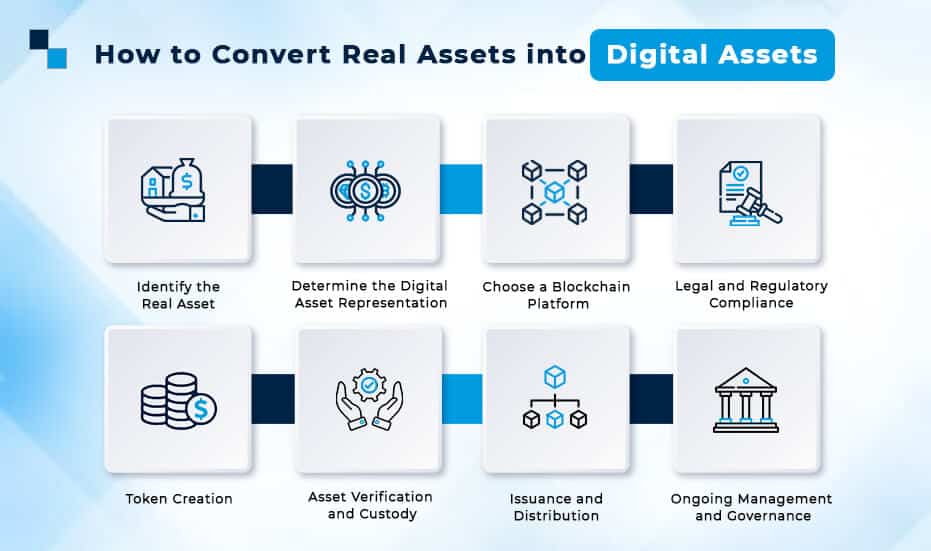
- Identify the Real Asset
The very first step is to identify the real asset that you want to convert into a digital asset. You can choose anything- real estate properties, artworks, precious metals, or other physical assets.
- Determine the Digital Asset Representation
The next step involves you deciding how you want to represent the real asset as a digital asset. The tokenization process involves creating a token that represents ownership of the asset. The token can be created using different standards, such as ERC20, ERC721, or ERC1155 for Ethereum-based tokens, or other blockchain protocols for other platforms.
- Choose a Blockchain Platform
Now you need to choose a blockchain platform on which you want to create and issue your digital asset. There are different blockchain platforms available, they all have different features, capabilities, and token standards, you can choose the one that fits your needs and goals. - Legal and Regulatory Compliance
It is important to comply with all legal and regulatory requirements related to converting real assets into digital assets. It may involve legal considerations like securities laws, property laws, and other relevant regulations in your jurisdiction. It is best to seek legal advice regarding the same. - Token Creation
Once you have selected a blockchain platform and determined the representation of your digital asset, you’ll need to create the token on the chosen blockchain. This may involve following the technical specifications of the chosen token standard and using smart contracts to define the ownership and transferability of the digital asset. - Asset Verification and Custody
To ensure the authenticity and legitimacy of the real asset being represented by the digital asset, you may need to verify the ownership and condition of the real asset. This may involve conducting due diligence, obtaining legal documentation, and verifying the physical asset’s existence and condition. Proper custody and storage of the real asset may also be necessary to maintain its value and security. - Issuance and Distribution
Once the digital asset is created and verified, it can be issued and distributed to the intended recipients. This may involve transferring the digital asset to the ownership wallets of the asset holders, either through a public sale, private placement, or other agreed-upon methods. - Ongoing Management and Governance
After converting the real asset into a digital asset, ongoing management and governance may be required. This could involve monitoring the digital asset’s performance, managing transfers or trades, and implementing any necessary changes or updates to the smart contracts or token parameters.
It’s important to note that converting real assets into digital assets involves complex legal, technical, and regulatory considerations. Working with experienced professionals, including legal advisors, blockchain developers, and other relevant experts, is recommended to ensure a smooth and compliant conversion process.
Future of Tokenized Assets
Tokenized assets are digital representations of real-world assets, such as real estate properties, artworks, commodities, stocks, bonds, and other tangible or intangible assets, that are recorded on a blockchain. These digital assets, also known as security tokens or asset-backed tokens, are created through a process called tokenization, where the ownership and value of the underlying asset are divided into smaller units represented by digital tokens. The future of tokenized assets holds significant potential for disrupting traditional financial systems and unlocking new opportunities for investors and asset owners. Here are some key aspects that highlight the future potential of tokenized assets:
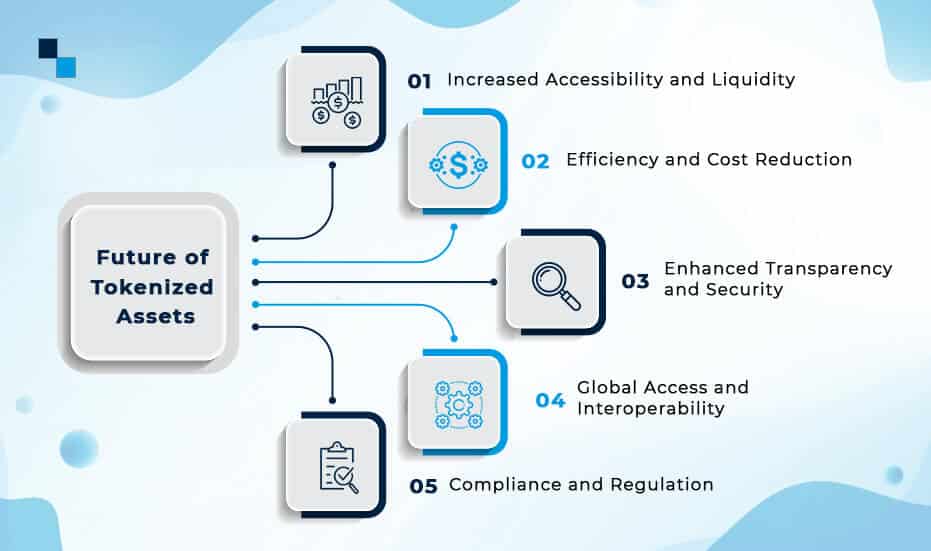
- Increased Accessibility and Liquidity
Tokenized assets can potentially democratize access to investment opportunities that were previously restricted to a limited group of investors. Fractional ownership of high-value assets can be made possible through tokenization, allowing investors to own a portion of an asset that they may not have been able to afford outright. This can enhance liquidity by enabling fractional ownership to be easily bought, sold, or traded on blockchain-based marketplaces, allowing for more efficient and accessible investment opportunities. - Efficiency and Cost Reduction
Tokenized assets can streamline the process of issuing, managing, and transferring ownership of assets. Since blockchain technology provides transparency, security, and automation, tokenization can potentially reduce intermediaries. Also, tokenization decreases associated costs, like legal fees, paperwork, and administrative overheads. This can result in more efficient, cost-effective, and faster transactions, benefiting both issuers and investors. - Enhanced Transparency and Security
Tokenized assets on a blockchain are recorded in a transparent and immutable manner, which provides a secure and verifiable record of ownership, transfers, and other transactions. It reduces fraud and improves accountability in the ownership and management of assets. Programmable scripts, aka smart contracts define the terms and conditions of tokenized assets, they can also ensure compliance with regulations, contractual agreements, and other governance rules, providing an additional layer of security and automation. - Global Access and Interoperability
Tokenized assets on a blockchain are not constrained by geographical boundaries or traditional financial systems, allowing for global access and interoperability. Investors from around the world can participate in tokenized asset offerings, and assets can be traded across different blockchain platforms, providing increased flexibility and options. This can open up new markets, facilitate cross-border investments, and enable greater diversification opportunities for investors.
- Compliance and Regulation
Compliance with securities laws and other regulations is a critical aspect of tokenized assets. The future of tokenized assets is likely to see increased regulatory scrutiny and the development of legal frameworks to ensure investor protection, market integrity, and compliance with applicable laws. This can foster trust, confidence, and mainstream adoption of tokenized assets as a viable investment option.
Final Words
Tokenized digital assets have emerged as a transformative technology with immense potential for the future. They have disrupted traditional financial systems, unlocking new opportunities for investment, fundraising, and asset ownership. As technology continues to evolve, we can expect to see increased adoption, innovation, and transformation in the way we invest, trade, and interact with assets. Looking for a reliable and experienced asset tokenization platform development company? Get in touch with Antier!
